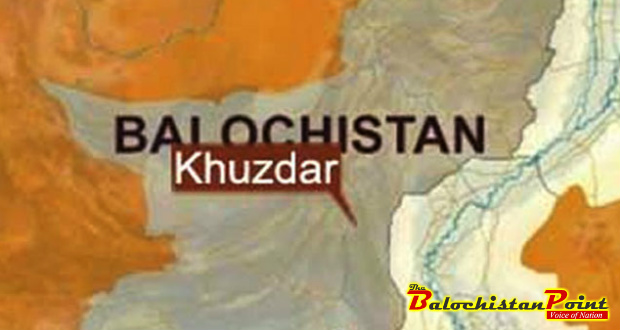Nazir Ahmed Sajjidi
Khuzdar is the second largest city and area wise second biggest District of Balochistan spreading over an area of 31,100 square Kilometers with 600,000 estimated population. Khuzdar was elevated to status of District on 1st, March, 1974 and it is politically, economically and geographically one of the most important areas of the province. Although tribalism is very strong in Khuzdar, it is considered to have well-aware population and politically much conscious. In recent times Khuzdar passed through one of its critical times of history when its most advance political, social and academic elite was eliminated both in insurgency and subsequent counter insurgency violence.
Despite the fact that Khuzdar is economically, politically, demographically and geographically significant area of Balochistan yet the people of Khuzdar face multitude of problems in 21st century. Majority of population of District Khuzdar lives in rural areas where the life standard of people is quite akin to Stone Age. Almost 70 percent of population has no access to pure drinking water. Leave rural areas on one side, even in Khuzdar city every household has shortage of pure drinking water and people are compelled to drink contaminated water or in many households, the tap of water supply never flows for even weeks-long time. As per a survey 80 percent of District Khuzdar’s population lacks sanitation facilities both in rural and urban areas of District Khuzdar. Healthcare facilities are also not in a good condition. There is one tertiary care Hospital for the entire District which is in most wretched condition. There is shortage of doctors, medicines, clean wards, equipments, hygiene, and immunization center and quality curative facilities within this sole Divisional Headquarter Hospital. Likewise, there are 6 RHCs, 42 BHUs, 31 CDs, One MCH center and one TB Clinic in rural areas of Khuzdar district but, it is a bitter truth that all these health facilities of District Khuzdar are completely dysfunctional and closed and their budget, medicines and other equipments are squandered mercilessly. Hundreds of staff posted in these health facilities are permanently absent from their duty places. Therefore, 90 percent of rural population of District Khuzdar is deprived of basic health facilities.
The topography of District Khuzdar is mostly mountainous and the communication or transport infrastructure is equal to none. The total Road network in Khuzdar is 2084 Kilometers out of which, the blacktop road length is merely 522 Kilometers. It is depressing that almost 60 percent of rural areas of District Khuzdar have no decent or proper means of transport. People still use animals as means of transport which should be a matter of shame for rulers of Balochistan. The ratio of maternal and infant deaths are very high in rural areas as diseases like malnutrition and anemia are common due to abject poverty among rural population of District Khuzdar.
Farming and rearing of livestock is the main livelihood of rural population but in recent years due to non availability of electricity and persistent droughts both these professions have suffered considerably. Resultantly the volume of unemployment and poverty has risen at an alarming level increasing crimes and social disturbances. In 24 hours only two hours electricity is supplied in rural areas and during that time, the voltage stays very low which causes financial losses to destitute farmers rather than powering their tube-wells. Thousands of cattle have died due to droughts.
Thousands of youth are unemployed in District Khuzdar and they have no hope of getting any job due to corruption, nepotism and sale of government jobs. The mushroom growth of private schools has made education an expensive luxury. Public sector Schools are either closed or have no quality education. Literacy rate is below 46 percent whereas higher level literacy rate is 33 percent which is disappointing. To the dismay of rulers, over 95 percent both girls and boys living in rural areas are out of schools since the government is the only agency to run schools in rural Khuzdar while the buildings of schools are used as guest houses of tribal and influential people. More than half of population of District Khuzdar lives in Stone Age in 21st century without basic amenities of life such as education, healthcare, transport, employment, pure drinking water and they are at the mercy of abject poverty. The devils of hunger, disease, illiteracy, suffering and poverty are wreaking havoc in Khuzdar. Nevertheless the angels do not seem to be turning up for the rescue of downtrodden masses of Khuzdar.
Published in The Balochistan Point on October 8, 2015
Disclaimer: Views expressed in this article are those of the author and The Balochistan Point not necessarily agrees with them.
 Balochistan Point Voice of Nation
Balochistan Point Voice of Nation




